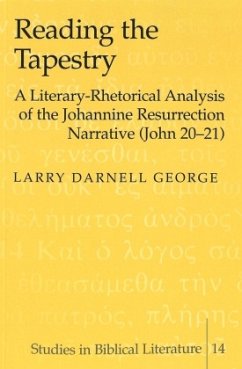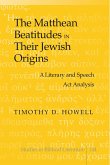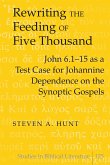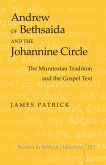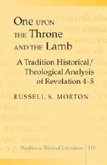Reading the Tapestry proposes a literary-rhetorical, temporal process of reading the fourth Gospel's resurrection narrative (John 20-21) from the perspective of the implied reader in the text, according to the strategies of the implied author. Informed by narrative criticism and reader response criticism, Larry Darnell George unpacks the narrative and rhetorical devices of the three episodes and twelve scenes and argues that the entire resurrection narrative represents a finely woven tapestry, a coherent unified narrative text on its own terms and as it now stands.
«Larry Darnell George, with an informed understanding and perceptive discussion of the literary-rhetorical approach to New Testament studies, has brought out something new about the old resurrection narratives in John 20-21. Focusing on the textual connection between the implied author and the implied reader, Dr. George analyzes these twelve scenes of the three episodes in John 20-21 to demonstrate its coherence and unity with the rest of the Gospel narratives, whilst opposing the fragmented reading of the fourth Gospel's resurrection narratives.
Dr. George's clear and illuminating use of literary-rhetorical analysis is solid as a methodology, represents a significant advance in scholarly work, and is an exemplary guide for exegetes and students.» (Solomon K. Avotri, Associate Professor of Bible, Payne Theological Seminary, Wilberforce, Ohio)
«Here is a much-needed literary-rhetorical investigation of the resurrection stories of John 20-21, which attempts to resolve the problematic and long-debated issues of the relationship of chapter 21 to the narrative world of the Fourth Gospel. Analyzing the textual structures of the implied author and the implied reader, Dr. George concludes that these culminating chapters are integral to the Gospel's unity and constitute 'a finely woven tapestry.' His work and its results deserve widespread reading and scholarly scrutiny, especially by students of the Gospel according to John.»
(Herman C. Waetjen, Robert S. Dollar Emeritus Professor of New Testament,
San Francisco Theological Seminary, San Anselmo)
Dr. George's clear and illuminating use of literary-rhetorical analysis is solid as a methodology, represents a significant advance in scholarly work, and is an exemplary guide for exegetes and students.» (Solomon K. Avotri, Associate Professor of Bible, Payne Theological Seminary, Wilberforce, Ohio)
«Here is a much-needed literary-rhetorical investigation of the resurrection stories of John 20-21, which attempts to resolve the problematic and long-debated issues of the relationship of chapter 21 to the narrative world of the Fourth Gospel. Analyzing the textual structures of the implied author and the implied reader, Dr. George concludes that these culminating chapters are integral to the Gospel's unity and constitute 'a finely woven tapestry.' His work and its results deserve widespread reading and scholarly scrutiny, especially by students of the Gospel according to John.»
(Herman C. Waetjen, Robert S. Dollar Emeritus Professor of New Testament,
San Francisco Theological Seminary, San Anselmo)

